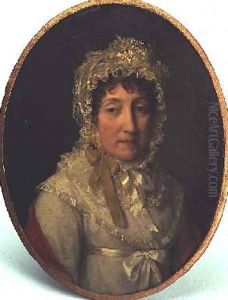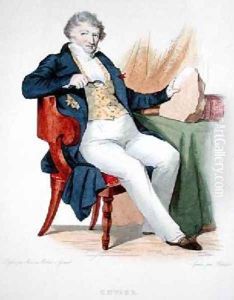Lizinska-Aimee-Zoe de Mirbel Paintings
Lizinska-Aimee-Zoe de Mirbel, born in 1796 in Paris, France, was a distinguished miniaturist and painter, celebrated for her exquisite miniature portraits, particularly those of the French royal family and aristocracy. Her talent and connection to the French court significantly influenced her career and artistic legacy. Lizinska's work is characterized by its intricate detail, vibrant colors, and the delicate portrayal of her subjects, which captured the elegance and sophistication of the era.
De Mirbel's artistic journey began under the tutelage of renowned painters such as Jean-Baptiste Isabey, a master miniaturist himself, whose mentorship was crucial in honing her skills and style. Her talent quickly garnered attention, leading to commissions from prominent figures within the French court. Lizinska's marriage to Charles-Louis de Mirbel, a botanist, in 1829, did not deter her artistic pursuits; rather, it provided her with new subjects and inspirations, as seen in some of her works that subtly incorporate botanical elements.
Throughout her career, Lizinska de Mirbel achieved considerable success and recognition. She served as a miniaturist to Queen Marie-Amelie, further solidifying her status as one of the era's leading portrait artists. Despite the political upheavals of the time, including the fall of the Bourbon monarchy and the tumultuous years of the July Monarchy, de Mirbel managed to maintain her patronage and continue her work, a testament to her skill and adaptability.
De Mirbel's contributions to the art world extend beyond her portraits. She was involved in the early feminist movement, advocating for the recognition and rights of female artists in a male-dominated field. Her efforts helped pave the way for future generations of women in art, making her legacy one of both artistic and social significance.
Lizinska-Aimee-Zoe de Mirbel passed away in 1849, leaving behind a body of work that remains admired for its beauty and precision. Her miniatures, often considered among the finest examples of 19th-century French miniature painting, continue to be studied and celebrated for their historical and artistic value. De Mirbel's life and work exemplify the challenges and achievements of female artists in the 19th century, making her a pivotal figure in the history of art.


